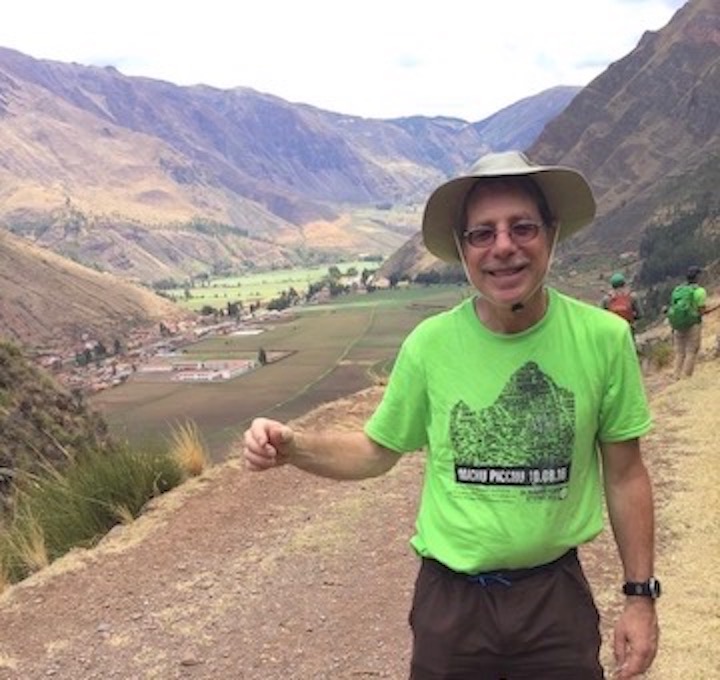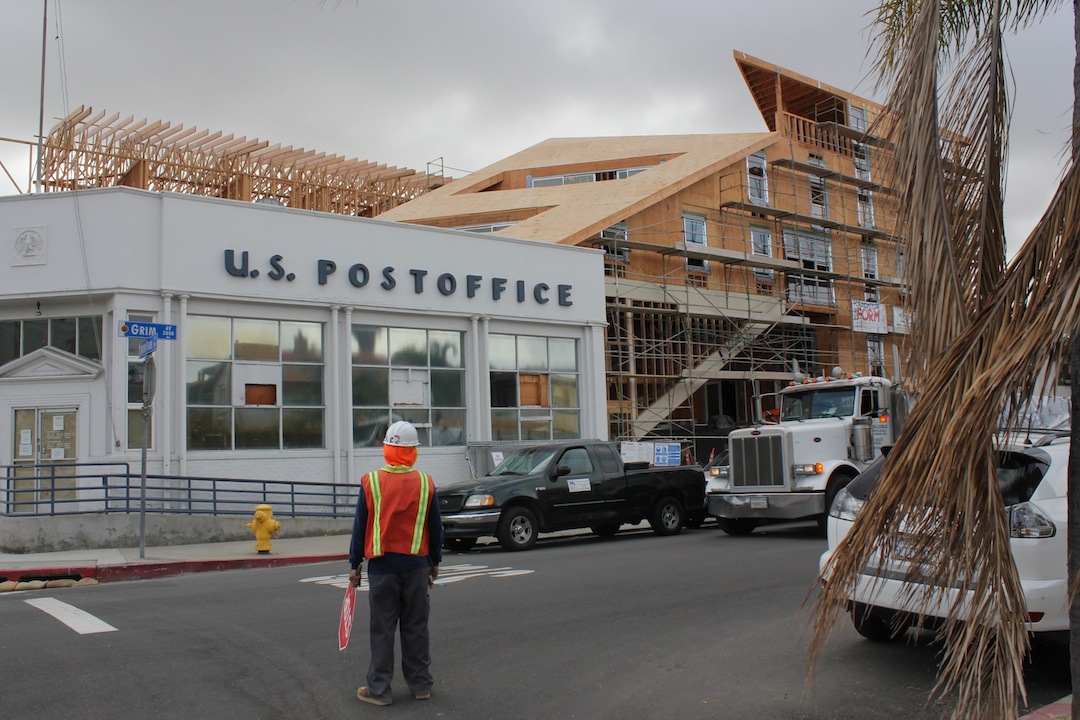SUMMIT ADVENTURE
North Park resident Michael Abrams on the Machu Picchu trek.
Michael Abrams Won’t Let
Parkinson’s Disease Break Him
By Delle Willett
Long-time North Park resident Michael Abrams recently visited Machu Picchu for the second time. The first time was in 1978, when he was a college student looking for adventure during a summer break. The second time had more meaning.
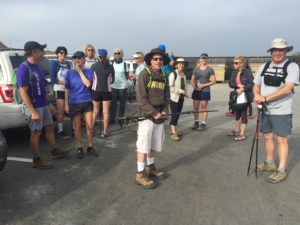
In October, Abrams and 28 other hikers, including nine who suffer with Parkinson’s disease (PD), climbed up into the Andes’ Villacamba Cordillera (mountain range) to raise awareness and funds for a promising new therapy to relive the symptoms of PD.
Scientists at the Scripps Research Institute on Torrey Pines Mesa are doing the work, while the project is being funded by Summit For Stem Cell, a nonprofit organization headquartered in San Diego.
Abrams says his second visit to Machu Picchu was better than the first because he was surrounded by people who love him, including other Parkinson’s patients and their caregivers, family members and spouses.
The team started training in late spring of 2016. Most of the participants are San Diegans, but others came from far and wide: Georgia, Idaho and included an ex-pat who makes his home in Thailand.
Here’s the story.
Abrams was diagnosed with PD in October 2013, the day he turned 59. On an impulse, he immediately volunteered for the Machu Picchu trek, then in the planning stage.
He describes the seven-day trek as “a celebration, adventure, and ordeal all in one.” The group took the road less traveled, walking up over 15,000 feet to the summit of the Salcantay Trail instead of the usual Inca Trail, which normally fills up with tourists.
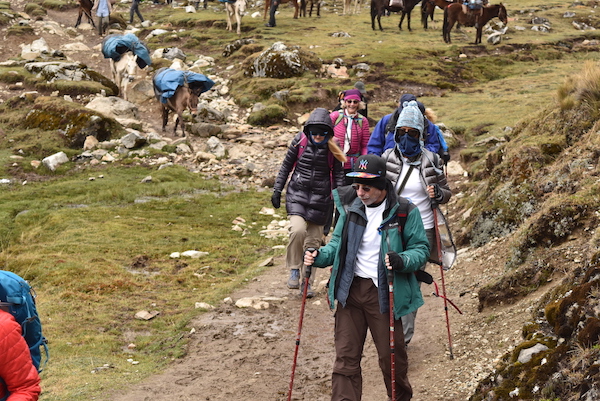
Abrams said the Salcantay weaved up and down through changing habitats from cold alpine high ground to hot steamy jungle.
“We were astonished by massive cubic rock formations angled skyward like white rockets streaked with caramel markings,” he said, adding that this was evidence of the enormous seismic power that shaped the “Sacred Valley of the Incas,” which is riven by the Urubamba River. It’s also the Incan heartland and the location of Machu Picchu and other archeological sites.
Abrams said the trekkers saw dozens of waterfalls decorating mountain slopes. Other ridges were punctured by Incan graves punched into the rock. They heard the roar of the Urubamba River which projects a clamorous sound as it slices through the valley as surging white water in many stretches.
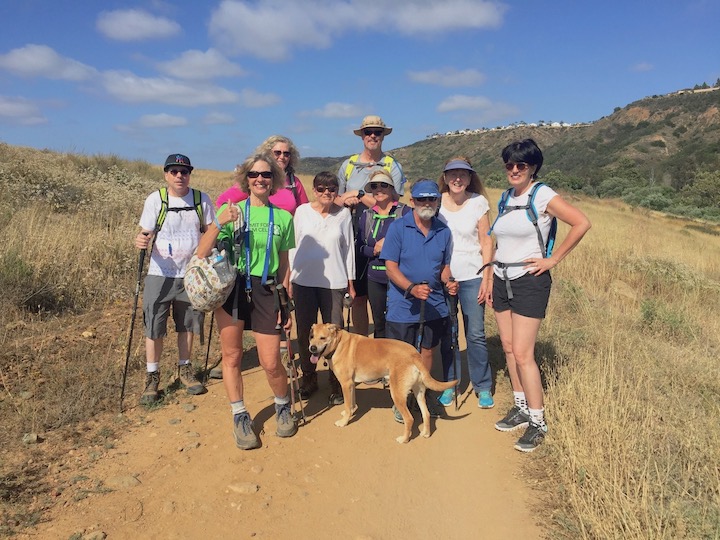
On his Facebook page, Abrams noted that sometimes the trail would double back and landforms would cushion the clamor.
“This is where the sounds of silence revealed themselves in the surrounding jungle: flapping butterfly wings, leaves rustling, birds chirping, and insects buzzing their primordial flight plans. We saw a terrified mouse playing dead in the root knuckles of an ancient tree, lizards, and a huge spider motionless as death, ruthlessly alive and waiting to kill, in a jacket suitable for a Formula One race car driver.
“Some of the flowers were mystical including one species with little spherical bubbles that in the sun’s reflection seemed to shine their own golden light. We passed by luxurious passion fruit and coffee plantation and meadows worth of the 23rd Psalm.”
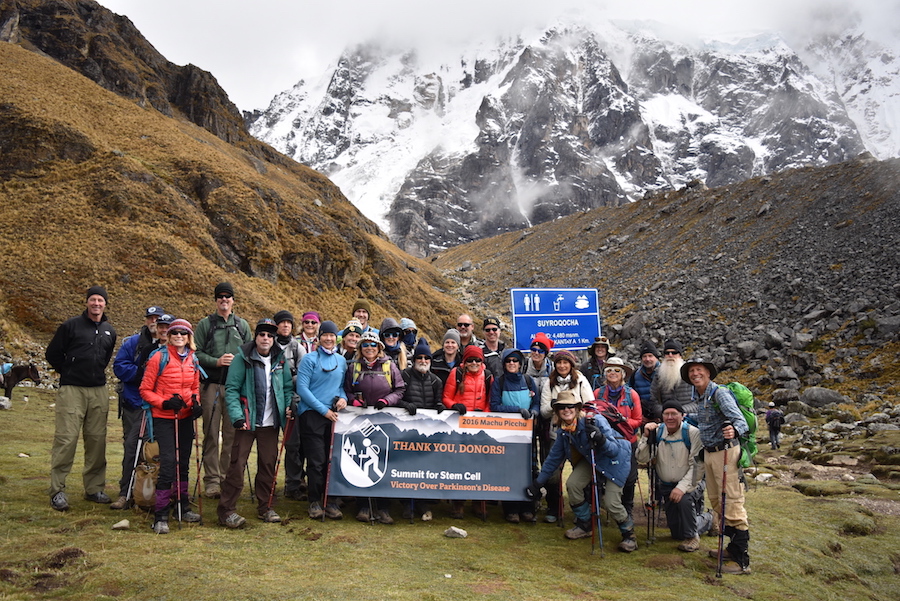
By happenstance, Abrams and lead expedition guide John Hauf lagged behind the rest of the group for most of a day.
“John is one of the world’s great hikers. He proved to me that walking slowly and building a stop into each set of steps enables you to achieve the faster overall pace. Instead of thinking about ‘making it’ or ‘keeping up’ you have time to let the tranquility of your surroundings enchant you. He taught me so much more, and made me rethink my attitude about the natural world. For this time I will always be grateful.”
The third day the hikers had to traverse an area where the path had been obliterated by a rock slide. The trail was marked by numerous drops ranging from 600 to 700 feet above the Urubamba.
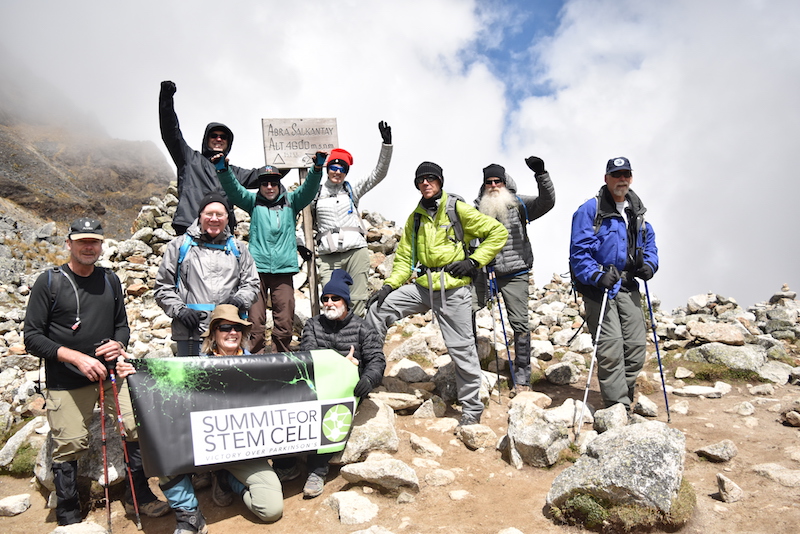
“We were walking over bridges fabricated out of tree branches and trunks that rolled like ball bearings,” Abrams said. “There were no railings. John held my hand to get me across because I’m afraid of heights. I actually looked down and saw large volumes of water pooling and bubbling and then falling at great speed. I was able to risk that look only because of John’s helping hand.”
The path sometimes narrowed in width from 18 inches to two feet. Navigating these ledges was made more hazardous because at at least one spot the trail was covered with what looked like small pieces of rip-rap, or pebble-like stones the size of rocks.
“This material was loose and would give way when we stepped,” Abrams said. “Our hiking poles were useless because they’d get stuck in the rocks. You’re holding these useless polls and there’s a 700-foot drop with no guardrail.”
It was amazing, but it wasn’t all glorious, said Abrams.
There were gnats in some places, “right out of Exodus.” Their bites left pock marks on the hikers’ legs, arms, and other exposed areas of skin.
On the first day it rained. The hikers were on a road that was widely used by pack animals. It was impossible to completely avoid stepping on fresh and rain-softened animal droppings.
The droppings and mud covered the hikers’ shoes and some of the camping equipment. When it finally dried, it caked into a mortar that would come off shoes and equipment as a fine powdery dust.
The thought that he was breathing in dusty animal droppings made Abrams imagine that he could smell an awful stench that sickened him. The odor stopped afflicting him when nurse practitioner Sherrie Gould, Summit’s director, reminded him that PD had robbed him of his sense of smell years ago. Hallucinations of this sort are a known PD symptom.
On days one and two, Abrams had to work through a stomach infection and another day with vertigo that made him dizzy and retch if he stood up or turned too quickly. He was forced to spend several hours on the floor of a train station, leaning his back on a bench, until the hikers returned.
“But as I rested, I made friends from Germany and Holland, bonded with Carlos, one of our fantastic Peruvian guides, with Ray Bezverkov another person with Parkinson’s, and a few Summit trekkers watching over Ray: his wife Judy, her sister Sandy Bassham, and friend Ellie Lockett.”
Abrams is also grateful to Gould and her husband, Jeff Seckendorf, for always keeping them on the path and moving forward.
Abrams says he also learned an important life lesson: You can be happy even when you don’t feel well. “I never knew that before. At times I felt the misery of stomach ailments but never once felt mentally unhappy.”
“Most of all I am humbled by the love and support shown by my Summit colleagues. I’d be turning into worm food without them. They got me through this awfully wonderful trek alive and better than ever.”
Abrams has decided he wants to be around loving and supportive people forever by trying to become more loving and generous himself. Reaching out to help others instead of focusing on being a poor-me person with Parkinson’s.
Each person with Parkinson’s has his own unique symptoms. For Abrams it’s “quiet” tremors which he can feel, but they aren’t noticeable to others and are usually accompanied by dizzy spells. His mouth locks up, his body gets rigid, his legs cramp, his toes splay and he feels like a high-frequency voltage is coursing through his body.
“It feels like I’m being electrocuted,” Abrams says, “I just have to work through these moments, keep moving. Force my body to do the things that dopamine-deficiency hampers. Fight back because Parkinson’s is always trying to make me not move.”
Born in Brooklyn and raised on Long Island, Abrams, an engineer, is on disability from Hewlett-Packard.
To participate in the hike to Machu Picchu and the Andes, hikers paid all their own expenses: $2,200 for the trek plus airfare. Each hiker was required to raise a minimum of $2,000 for the Summit For Stem Cell research. Abrams raised $4,925 from his supporters and the trek itself has raised over $135,000, with donations still coming in.
Nurse Practioner Sherrie Gould, who works at the Scripps Clinic Movement Disorders Clinic and volunteers for Summit, is the originator and organizer of the hikes, the first to the top of Mt. Kilimanjaro, the second to the base camp of Mt. Everest, and the third to Machu Picchu.

